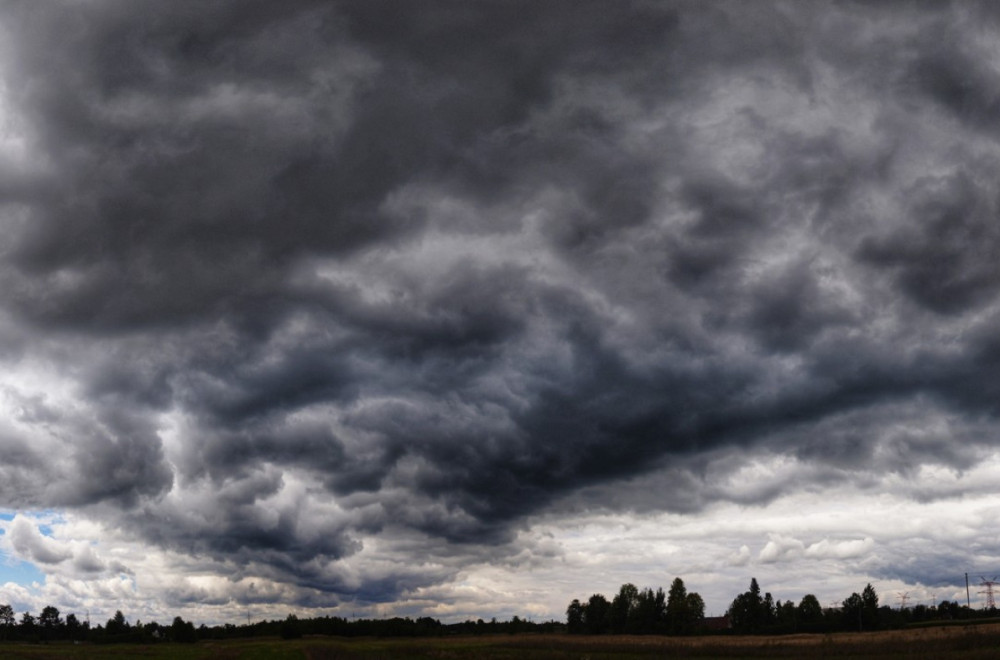22.04.2024.
8:50
If just one system stops, the whole world goes to hell, and it started to slow down
The North Atlantic Meridional Current (AMOC) is slowing faster than thought and is approaching the point of no return, and the consequences for the whole world will be severe, says the oceanographer.

As stated by Stefan Rahmstorf from the University of Potsdam and the Institute for Climate Change Impact Research in Germany, the consequences will be especially dangerous for the northern hemisphere.
If the AMOC were to collapse, it would very likely cause sudden changes in regional weather patterns and the water cycle, such as a southward shift of the tropical rain belt, a weakening of the African and Asian monsoons, a strengthening of the Southern Hemisphere monsoon, and a decrease in precipitation and decline in food production in Europe.
Among other things, according to the oceanographer, additional sea level rise can be expected, especially along the American Atlantic coast, a decrease in the absorption of CO2 in ocean waters, a significant decrease in the oxygen supply of deep ocean waters and a probable collapse of the ecosystem in the North Atlantic.
The AMOC is a complex system, which includes the interactions of temperature, salinity, freshwater inflow and other factors, and it implies that there could be several turning points - the AMOC is very sensitive to climate changes, especially sudden ones, even when they are short-lived because system returns to equilibrium more slowly.
Since the northern polar regions are warming rapidly, faster than other parts of the world because the melting of the ice leads to a decrease in the light surfaces that reflect the Sun's rays and an increase in the dark surfaces of water and soil that absorb them, a large amount of water resulting from the melting of the glaciers in Greenland ends up in the Atlantic Ocean and ice in the Arctic.
The additional intake of fresh water further reduces the salinity and thus the density of surface waters in the Atlantic, which slows down their sinking and weakens the movement of deep waters to the south.
Rahmstorfm presented a number of studies that indicate that changes in the AMOC have already begun, and that they are serious and real. One of those consequences is the formation of a cold spot in the subpolar, northern part of the Atlantic Ocean.
"While the entire globe has warmed, the subpolar North Atlantic has resisted and even cooled. This is exactly the area where the AMOC delivers most of its heat, and exactly the area where climate models have long predicted cooling as a result of the AMOC slowing down." says Rahmstorf.
He points out that this cold spot is already affecting weather conditions, although not in the way one might expect.
Namely, the cold subpolar North Atlantic is correlated with the summer heat in southern Europe, and especially in the Mediterranean. Why? The cooling of the sea surface is sufficient to affect the distribution of air pressure in such a way as to encourage the flow of warm air from the south to Europe.
Dr. Sc. Natalija Dunić, an oceanographer from the Marine Physics Laboratory at the Institute of Oceanography and Fisheries in Split, says that these changes are already affecting the Adriatic Sea.
"The strongest occurrences of sea heat waves were recorded in 1982, 2003, 2012, 2015 and 2017, while the last few years have been breaking records, especially in the summer months. Changes in sea temperature are also visible at greater depths", she stated.
Several studies also show that if the AMOC weakens, sea levels on the US Northeast coast will rise sharply.
Scientists also warn that the complete cessation of the AMOC would have devastating consequences for humanity and many marine and terrestrial ecosystems.
Several models, scenarios, were also created, which showed that, in that case, low air temperatures would spread and cover Iceland, Britain and Scandinavia.
The temperature contrast between northern and southern Europe would increase by a whopping 4°C, which would likely have a major impact on the weather, for example creating unprecedented storms.
When it comes to precipitation, it would cause droughts in some parts, in the northern tropics of America, as well as in Asia. At the same time, it should be kept in mind that seasonal changes would be even greater than the annual average shown.
Other simulations predict a significant increase in winter storms in Europe and a sharp reduction in crop and pasture yields there. But, as stated, the most worrisome is the movement of tropical rain belts to the south and the general drought of Europe.
























































Komentari 0
Pogledaj komentare Pošalji komentar